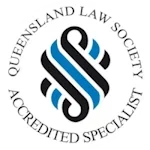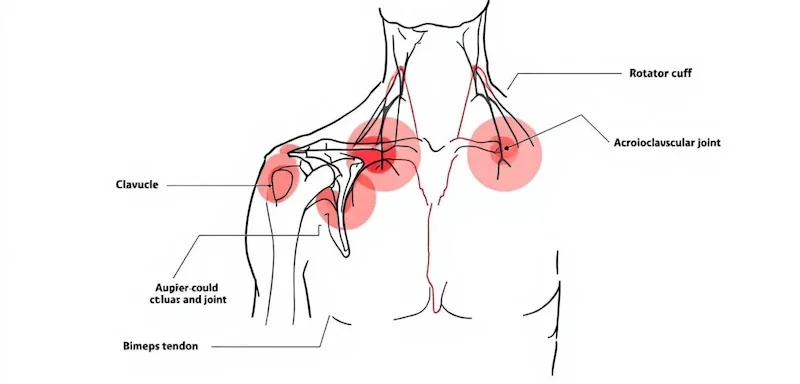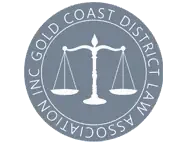You might be eligible to claim a shoulder injury compensation payout for an accident or work-related injury caused by the negligence of others. Regardless of how your rotator cuff tear or injury occurred, our personal injury lawyers can advise you on your eligibility to claim compensation. They can also explain the process of calculating the value of a lump sum payment during a free case review.
In Australia, shoulder injuries frequently happen in workplace incidents, road accidents, medical negligence and accidents in public areas. Consequently, payout amounts differ based on the type of compensation claim, injury severity, and how much it affects your life.
The Workers Compensation Lawyers QLD provide advice for rotator cuff and shoulder injury claim settlements with a 100% no-win, no-fee, no-risk guarantee. Pay for a win and zero if you lose. It’s free to know your eligibility to make a shoulder injury compensation claim. Ask us now
Check it out!
If you have suffered a shoulder injury in Australia (or a rotator cuff tear), you could be eligible to make a compensation claim for your shoulder injury, depending on:
Typical scenarios include shoulder injuries caused by someone else’s actions (or inaction), including the following:
Our qualified compensation lawyers can explain your rights and entitlements during a free initial consultation. Call 1800 575 023
If you have suffered a shoulder injury that prevents you from working and causes a financial loss, you could have more than one claim for the same medical condition, depending on how the accident happened and who was at fault. Here is one example.
An employee has an accident while travelling in their own car for work purposes, which wasn’t their fault. In this case, they might be eligible to:
Furthermore, if they can no longer work in their usual occupation, they could make a total and permanent disability claim through a superannuation insurance policy.
This is just one example. Experienced personal injury lawyers can explain your options.
You have the right to seek legal advice if you have a denied workers’ compensation claim (or any claim covered by personal injury law). Our team of solicitors and lawyers provides a free case review that can explain your legal position and the steps to a successful outcome. (we don’t advise on medical negligence cases)
Our team of qualified shoulder injury lawyers provides free initial legal advice by phone to residents throughout Queensland. Our free legal case review can explain the following:
Pay only for a win and zero if you lose. It’s free to learn your options. Call 1800 575 023
Learn your entitlements
If you’ve suffered a shoulder injury in Australia, you may find it difficult to work and earn an income. You will also have to cover medical bills and rehabilitation costs. As a result, the cost of seeking legal advice could be beyond your means.
The Workers Compensation Lawyers QLD provide a genuine 100% no-win, no-fee, no-risk guarantee for all shoulder injury legal services. Our funding policy means the following:
Our team of compensation solicitors can advise if you qualify for 100% No-Fee funding during a free case review. Call 1800 575 023

Kerry Splatt, the principal of our shoulder injury law firm, is a Queensland Law Society-Accredited Specialist Personal Injury Lawyer. He provides guidance for our legal team that deals with compensation payouts in Australia.
Specialist injury lawyers undergo further training in personal injury law and pass a thorough assessment. As a result, they possess advanced knowledge and skills for managing the compensation process.

In Australia, compensation payouts for shoulder injuries vary depending on how the injury occurred. Here are the main types of personal injury claims.
All Queensland employers have a duty to provide a safe and healthy workplace. As a result, you may be eligible for workers’ compensation benefits if you have suffered a shoulder injury at work or during off-site work-related activities. For a successful workers’ compensation claim, you should report the workplace injuries and have a doctor document the damage. These actions start the claim process with the workers’ compensation insurer and help establish a clear link between your job and the shoulder injury.
To be eligible for workers’ compensation benefits, you must report your injury to your employer as soon as possible and seek medical treatment. Once approved, workers’ compensation claims can pay benefits that cover:
Approved workers’ compensation claims can pay benefits that cover
Generally, any long-term work-related shoulder damage could qualify for a WorkCover permanent impairment lump sum payment.
The sudden force of a car accident can cause a severe injury to the shoulder joint. All road users (driver, passengers, pedestrians etc) can be eligible for compensation payouts in Australia in such cases.
That’s because mandatory CTP insurance is included with all motor vehicle registrations. Therefore, for a claim related to a motor vehicle accident, you may be entitled to compensation from the at-fault driver’s insurance. CTP claims address both:
In Australia, public liability insurance covers accidents in public spaces, including shopping centres, footpaths, car parks, and all types of privately owned venues and council-owned property. In these spaces, slip and fall accidents often result in:
In such cases, the injured party could pursue damages by making a public liability claim.
You can make a total and permanent disability claim through the insurance contained within your superannuation policy when a minor or severe shoulder injury prevents you from returning to your own job or any form of employment. Eligibility to claim a TPD payout will depend on the terms and conditions of your permanent disability insurance policy.
In Australia, a successful TPD claim delivers a one-time lump sum compensation payment that typically ranges from $50,000 to $500,000.
Medical negligence can cause shoulder injuries when doctors and other medical professionals fail to meet the expected standard of care. Common examples of medical negligence related to shoulder injuries include:
NOTE: Our personal injury lawyers do not advise on medical negligence cases.
A common law claim allows an injured party to claim compensation for a financial loss caused by another party’s negligence or wrongdoing (including when an employer’s negligence caused a shoulder injury).
This type of damages payout goes beyond what is covered by statutory workers’ compensation schemes, because it considers both economic and non-economic damages, like pain and suffering.

Most shoulder injury compensation payouts in Australia are kept confidential because these claims are typically settled through mediation. However, some cases go to court, and then the payout amounts become public. Below is a table of compensation payouts in Australia for shoulder injuries.
Case | Occupation | Accident Type | Injury Type | % Impairment | Payout Amount |
|---|---|---|---|---|---|
AAI Ltd v Marinkovic | Tiler | Motor vehicle accident | Back, neck, and shoulder | Moderate shoulder ISV15 | $458,528 |
Samways v WorkCover | Concretor | Work accident with 20% contribution | Shoulder | Minor soft tissue injury ISV5 | $26,007 |
Girone v Denholm and Allianz | Welder | Motor vehicle accident | Multiple incl shoulder | Compound injuries ISV27 | $660,637 |
McKay v Armstrong | Retail | Motor vehicle accident | Shoulder and Psychiatric | WPI 6% | $77,473 |
Kemp Meats Pty Ltd v Tompkins | Meat Worker | Work accident | Shoulder | WPI 12% | $337,113 |
Witherington v Lev’s Fabrications | Trades assistant | Work accident | Dislocated Shoulder and ankle injury | WPI 4% to 5% | $503,865 |
How much compensation you receive for a shoulder or rotator cuff injury depends on a series of factors (outlined in the following section).
Payouts for approved shoulder injury claims consider the following factors:
Experienced personal injury lawyers understand how to calculate common law damages, regardless of how the shoulder injury occurred. They can explain the financial compensation entitlements outlined in the Personal Injury Proceedings Act 2002.

Multiple elements influence the value of shoulder injury compensation amounts, including the following:
You may pursue damages for work injuries under common law if you can prove that employer negligence caused your shoulder injury. Work-related compensation payments are usually higher than statutory claims because they take into account additional factors like pain and suffering. Proof of safety violations can include documentation of:
When you are nearing the end of a workers’ compensation claim, an independent medical assessment can be conducted to determine the level of whole person impairment. This assessment usually takes place after you have achieved maximum medical improvement and provides a permanent impairment rating.
The subsequent rating directly impacts the value of a permanent impairment lump sum offer from WorkCover.
Your current age and pre-injury wages directly impact the value of shoulder injury compensation payouts in Australia (for both workers compensation and personal injury claims).
Insurance companies are most often responsible for paying shoulder injury compensation. They often try to lower settlement amounts by claiming you contributed to the accident. Consequently, settlement values are reduced if they can prove contributory negligence.
Experienced personal injury lawyers understand the tactics insurers use to reduce payout amounts and would take steps to negotiate the level of contributory negligence.
There are strict time limits for shoulder injury claims, which differ depending on how the injury occurred. We recommend you seek legal advice to understand your circumstances, but here are the general deadlines:

In Australia, the legal process timeline from initial claim to final settlement typically takes between 6 and 18 months for straightforward cases. However, complex issues such as employer negligence or disputed liability can prolong the process for 2–3 years before reaching a fair settlement.
On the other hand, workers’ compensation benefits typically commence within weeks of lodgement, providing immediate financial support for recovery.
In Australia, some common shoulder injuries typically qualify for compensation payouts, depending on the accident type and who was the at-fault party. Here are the six examples.
Rotator cuff injuries range from minor strains to complete tears and often occur due to repetitive motions or sudden trauma. They are the most common shoulder injury in compensation claims, with significant variations in payout amounts.
Shoulder dislocations occur when the upper arm bone slips out of the shoulder socket, often caused by falls or direct impacts. In many cases, the upper arm bone pops out of place, causing nerve damage and surgery.
Compensation for fractured shoulders varies based on surgical requirements, healing complications and the extent of permanent disability.
Frozen shoulder, also known as adhesive capsulitis, causes pain and stiffness in the shoulder joint and may develop gradually after an injury.
A frozen shoulder can create substantial functional impairment lasting 18-24 months, resulting in financial compensation for pain and suffering and lost wages.
Impingement syndrome occurs when the tendons in the shoulder become compressed and irritated, usually from overuse or previous injury.
A shoulder impingement can cause irritation, inflammation, swelling, and pain, leading to weakness when raising the arm and a limited range of movement. This condition is typically managed with physiotherapy and rehabilitation and generally results in lower compensation payouts unless the injured person works in a physically demanding role.
A complete shoulder reconstruction is considered the most serious injury category, with higher compensation amounts for cases involving:
These complex cases often involve workplace accidents with significant trauma, requiring comprehensive medical intervention and resulting in substantial long-term impairment. They also often qualify for a total and permanent disability claim.
In Australia, you have the right to seek legal advice no matter how a shoulder injury occurred. Our personal injury legal team can advise you on your eligibility to :
They can help you identify the negligent party (they may be more than one) and explain how to collect the required evidence to build a compelling case.
The Workers Compensation Lawyers QLD offer a free case review that can explain your rights and entitlements when someone else causes you a shoulder injury, regardless of how or where it happened.
All our personal injury legal services come with a genuine no-win, no-fee, no-risk guarantee. Pay only after a win, and zero if you lose. It’s free to know where you stand. Call 1800 575 023
You could keep working after a rotator cuff injury, depending on the level of impairment and your occupation. For example:
Keep in mind that complete rest would likely result in a faster recovery, and you should always follow medical advice.
You can make a shoulder injury compensation claim without the support of a personal injury lawyer. However, people often seek legal advice due to the complexity of the process.
To support a shoulder injury compensation claim, you generally need:
This evidence is significant if you have suffered a severe injury, such as a rotator cuff tear or shoulder dislocation, or if your injury has resulted in permanent impairment.
You can still be eligible to claim a shoulder injury compensation payout even if you helped cause the accident. However, the settlement amount will be reduced by your percentage of contribution.


